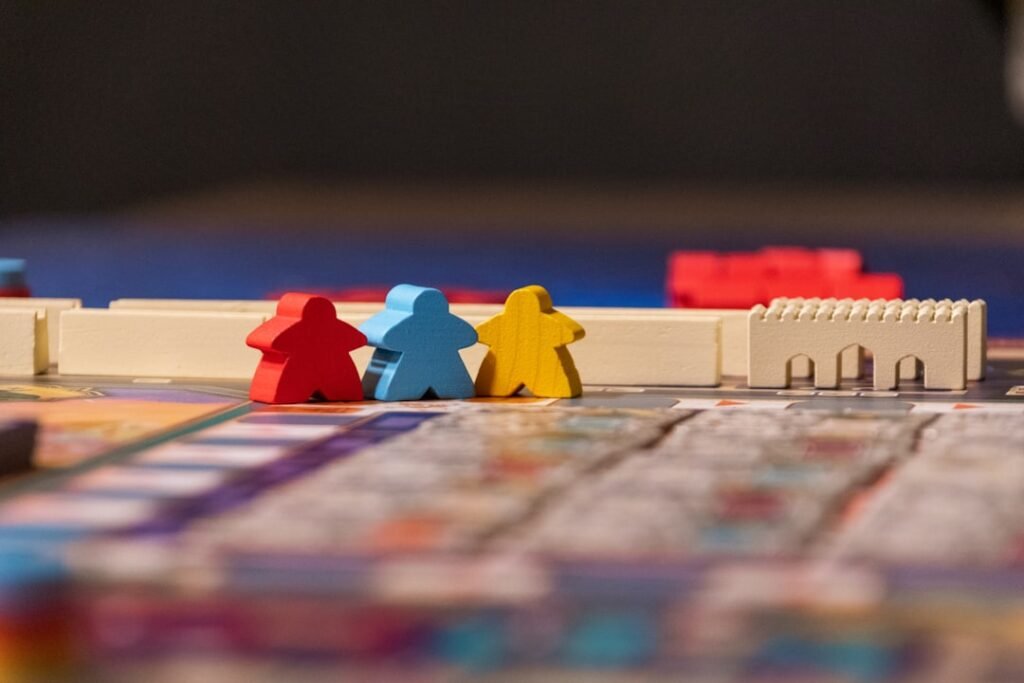Now Reading: Top Games Worthy of a Sequel: The Ultimate List
-
01
Top Games Worthy of a Sequel: The Ultimate List
Top Games Worthy of a Sequel: The Ultimate List

As a passionate gamer, I have always been fascinated by the evolution of video games, particularly the sequels that build upon their predecessors. Sequels in gaming serve as a bridge between the original experience and new adventures, often expanding on the lore, gameplay mechanics, and emotional depth that players have come to love. They can be a double-edged sword; while they have the potential to elevate a franchise to new heights, they also carry the risk of disappointing fans if they fail to capture the essence of what made the original so special.
In this article, I will explore some of the most notable sequels in gaming history, examining how they have shaped their respective franchises and the gaming landscape as a whole. The allure of sequels lies in their ability to offer familiar yet fresh experiences. They allow developers to refine their ideas, introduce new characters, and expand on existing narratives.
For gamers like me, sequels can evoke a sense of nostalgia while simultaneously providing new challenges and stories to explore. As I delve into various titles, I will highlight how these sequels have not only succeeded in captivating audiences but also set new standards for what we can expect from future games.
Key Takeaways
- Sequels in gaming are a common phenomenon, with many successful franchises releasing multiple installments over the years.
- The Legend of Zelda: Breath of the Wild set a new standard for open-world gaming with its vast, immersive world and innovative gameplay mechanics.
- Red Dead Redemption 2 impressed players and critics alike with its stunning visuals, compelling story, and immersive open-world experience.
- The Last of Us received widespread acclaim for its emotional storytelling, well-developed characters, and intense gameplay.
- Horizon Zero Dawn captivated players with its unique blend of futuristic technology and primitive tribal societies, set in a visually stunning open world.
The Legend of Zelda: Breath of the Wild
A Breathtakingly Expansive World
What I found was a breathtakingly expansive world filled with intricate details and a level of freedom that I had never experienced before in a Zelda game. Breath of the Wild took the core elements that made previous titles so beloved—puzzle-solving, exploration, and combat—and elevated them to new heights. The game encouraged me to approach challenges in multiple ways, allowing for creativity and experimentation.
Vast Landscapes Filled with Secrets
The vast landscapes, from lush forests to arid deserts, were not just visually stunning; they were filled with secrets waiting to be uncovered. This sequel not only honored the legacy of its predecessors but also pushed the boundaries of what an open-world game could be, setting a new benchmark for future titles in the genre.
A New Benchmark for Open-World Games
Red Dead Redemption 2

Another sequel that left an indelible mark on my gaming experience is “Red Dead Redemption 2.” Released in 2018, this game is a prequel to the original “Red Dead Redemption,” yet it stands as a testament to how sequels can delve deeper into character development and narrative complexity. Rockstar Games took everything that made the first installment great and expanded upon it with a richly woven story that explores themes of loyalty, morality, and the inevitable decline of the Wild West. As I traversed the vast landscapes of America’s heartland, I was struck by the attention to detail that Rockstar infused into every aspect of the game.
The characters felt real and relatable, each with their own motivations and struggles. The interactions I had with them were not just side quests; they were integral to understanding the world around me. The emotional weight of Arthur Morgan’s journey resonated deeply with me, making it one of the most memorable gaming experiences I’ve ever had.
Red Dead Redemption 2 exemplifies how a sequel can not only build on its predecessor’s foundation but also create a narrative that stands on its own merit.
The Last of Us
“The Last of Us Part II” is another sequel that sparked intense discussions within the gaming community. Released in 2020, it followed the critically acclaimed original from 2013 and took bold risks in its storytelling approach. As someone who was profoundly moved by the first game’s exploration of love, loss, and survival, I was both eager and anxious to see how this sequel would continue Ellie’s journey.
What struck me most about The Last of Us Part II was its willingness to challenge players’ perceptions of morality and justice. The narrative was not just a continuation; it was an evolution that forced me to confront uncomfortable truths about revenge and its consequences. The gameplay mechanics were refined, offering more fluidity in combat and exploration while maintaining the emotional weight that defined its predecessor.
This sequel pushed boundaries not only in terms of gameplay but also in storytelling, proving that video games can tackle complex themes with depth and nuance.
Horizon Zero Dawn
In 2017, “Horizon Zero Dawn” introduced me to a stunning post-apocalyptic world where robotic creatures roamed freely among remnants of humanity. As a sequel to nothing—being an entirely new IP—it set a high bar for future installments in its franchise. The game’s protagonist, Aloy, quickly became one of my favorite characters due to her resilience and determination to uncover her past while navigating a world filled with danger.
The sequel, “Horizon Forbidden West,” released in 2022, expanded on everything I loved about the original while introducing new gameplay mechanics and environments.
The narrative deepened as Aloy continued her quest for knowledge and understanding in a world that constantly evolved around her.
This sequel not only built upon its predecessor’s foundation but also showcased how new IPs can flourish into beloved franchises.
Bioshock Infinite

“Bioshock Infinite” is another sequel that stands out in my memory for its ambitious storytelling and innovative gameplay mechanics. Released in 2013 as a follow-up to the original “Bioshock,” this game transported me from the depths of Rapture to the skies of Columbia—a vibrant yet oppressive floating city. The shift in setting was refreshing, but it was the narrative that truly captivated me.
The story tackled complex themes such as nationalism, racism, and free will while intertwining them with an engaging plot filled with twists and turns. As I navigated through Columbia, I found myself questioning not only the characters’ motivations but also my own beliefs about choice and consequence. The gameplay mechanics were refined from the original, offering new ways to engage with enemies and explore the environment.
Bioshock Infinite exemplified how sequels could push narrative boundaries while maintaining engaging gameplay.
Portal 2
“Portal 2” is a prime example of how humor and clever puzzle design can elevate a sequel beyond its predecessor. Released in 2011, it built upon the unique mechanics introduced in “Portal,” expanding both the gameplay and narrative significantly. As someone who enjoyed the original’s mind-bending puzzles and dark humor, I was thrilled to see how Valve would develop this quirky universe further.
The introduction of new gameplay elements like gels and turrets added layers of complexity to puzzles that kept me engaged throughout my playthrough. However, it was the character development—particularly that of GLaDOS and Wheatley—that truly made this sequel shine. Their witty banter and evolving dynamics added depth to an already intriguing story.
Portal 2 not only succeeded as a sequel by enhancing gameplay but also by crafting an unforgettable narrative experience that left me laughing long after I had finished playing.
Half-Life 2
“Half-Life 2” is often hailed as one of the greatest sequels in gaming history, and for good reason. Released in 2004, it took everything that made the original “Half-Life” groundbreaking—immersive storytelling and innovative gameplay—and elevated it to new heights. As I stepped back into Gordon Freeman’s shoes, I was immediately drawn into a dystopian world filled with tension and intrigue.
The game’s physics engine revolutionized how I interacted with the environment, allowing for creative problem-solving that felt organic rather than forced. The narrative was rich with political undertones and character development that kept me invested throughout my journey. Half-Life 2 set a standard for first-person shooters that many games still strive to meet today, proving that sequels can redefine genres while remaining true to their roots.
God of War (2018)
The 2018 reboot of “God of War” reimagined a beloved franchise while staying true to its core themes of fatherhood and vengeance. As someone who had followed Kratos’s journey through his previous adventures, I was both excited and curious about how this new direction would unfold. What I found was a beautifully crafted narrative that explored deeper emotional connections while maintaining thrilling combat mechanics.
The relationship between Kratos and his son Atreus added layers of complexity to the story that resonated deeply with me as a player. The game’s Norse mythology backdrop provided a fresh setting while allowing for rich storytelling opportunities. The seamless integration of exploration and combat made every moment feel impactful, showcasing how sequels can evolve while still honoring their legacy.
Bloodborne
“Bloodborne” is another standout sequel that took inspiration from its predecessor while forging its own identity within the action RPG genre. Released in 2015 by FromSoftware, it built upon the challenging gameplay mechanics established in “Dark Souls,” offering a faster-paced experience set in a hauntingly beautiful gothic world. As someone who relished the challenge presented by Dark Souls, Bloodborne felt like a natural evolution.
The game’s atmosphere was palpable; every corner held secrets waiting to be uncovered or horrors lurking just out of sight.
Bloodborne exemplified how sequels could take established mechanics and refine them into something uniquely captivating.
The Future of Sequels in Gaming
As I reflect on these remarkable sequels, it’s clear that they have shaped not only their respective franchises but also the gaming industry as a whole. Each title has demonstrated how sequels can honor their predecessors while pushing boundaries in storytelling, gameplay mechanics, and emotional depth. The future of sequels in gaming holds immense potential; as technology continues to advance and developers become more innovative, I am excited to see how beloved franchises will evolve.
In an era where players crave both nostalgia and fresh experiences, sequels will undoubtedly play a crucial role in shaping our gaming landscape. They have the power to connect generations of gamers while introducing new audiences to iconic characters and stories. As I look forward to upcoming titles, I am hopeful that developers will continue to embrace creativity and innovation in their sequels—crafting experiences that resonate deeply with players like me for years to come.
One related article that sheds light on the impact of government regulations on the gaming industry is Government Regulations Impacting Gaming: Loot Box Bans and Copyright Laws. This article discusses how regulations can affect the development and release of sequels to popular games. It also touches on the influence of microtransactions and pay-to-win mechanics, as explored in another article titled The Influence of Microtransactions and Pay-to-Win Mechanics. Understanding these controversial aspects of gaming can provide valuable insights into the challenges faced by developers when creating sequels to beloved titles.
FAQs
What are some top games that deserve a sequel?
Some top games that are often mentioned as deserving a sequel include “The Last of Us,” “Red Dead Redemption,” “Bioshock,” “Half-Life 2,” and “Portal.”
What makes a game deserving of a sequel?
A game is often considered deserving of a sequel if it has a strong and engaging story, memorable characters, innovative gameplay mechanics, and a dedicated fan base that is eager to see more from the game’s universe.
Are there any confirmed sequels for these games?
As of now, there are no confirmed sequels for the mentioned games. However, there have been rumors and speculations about potential sequels for some of these titles.
How do game developers decide whether to create a sequel?
Game developers typically consider factors such as the commercial success of the original game, fan demand for a sequel, the potential for expanding the game’s universe, and the availability of new technologies and gameplay innovations when deciding whether to create a sequel.
What are the challenges in creating a sequel to a popular game?
Some challenges in creating a sequel to a popular game include meeting the high expectations of fans, innovating on the original game’s mechanics and story, and avoiding the pitfalls of repeating the same formula without adding meaningful improvements.



























